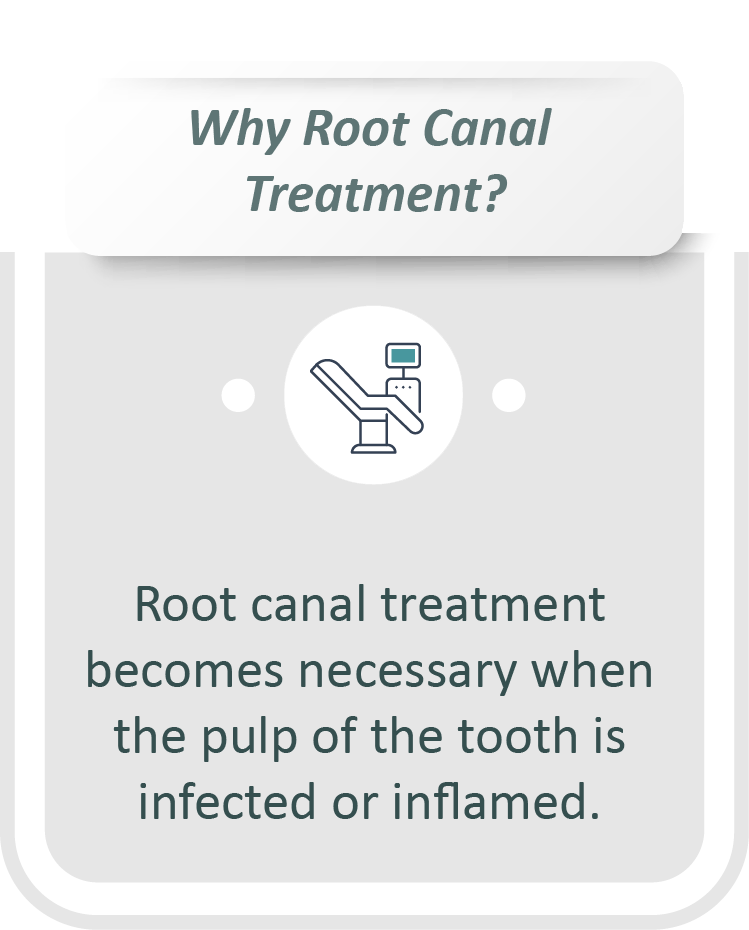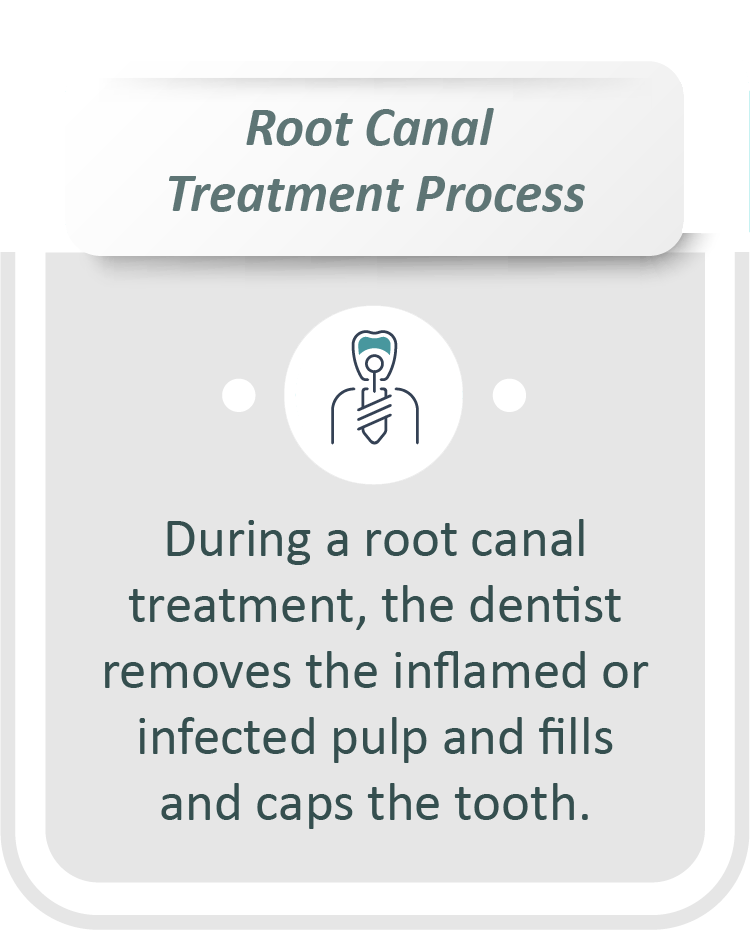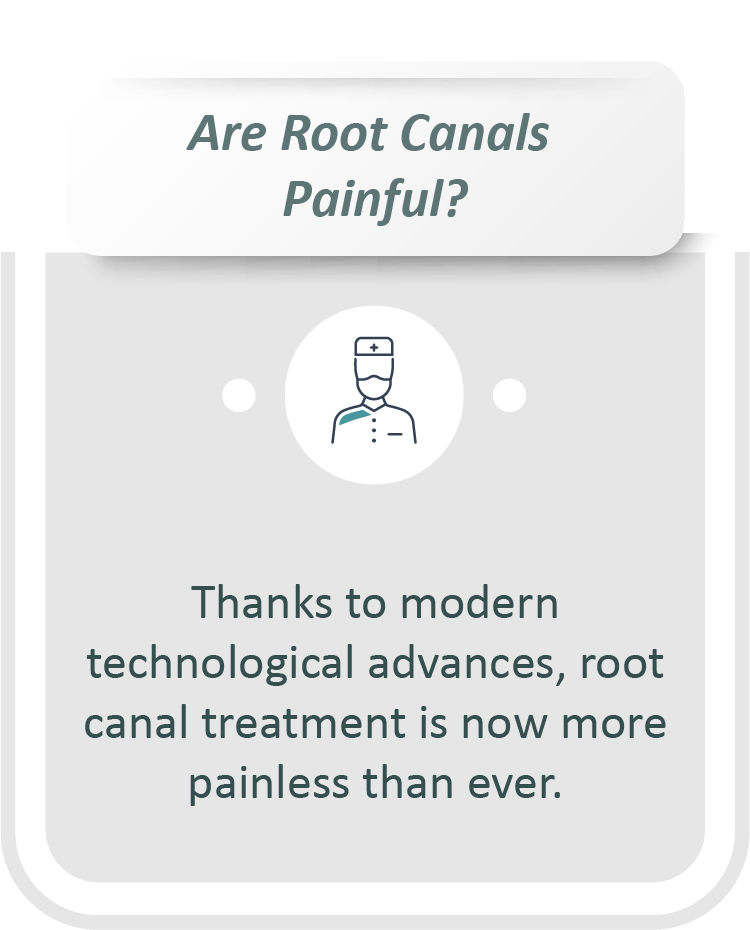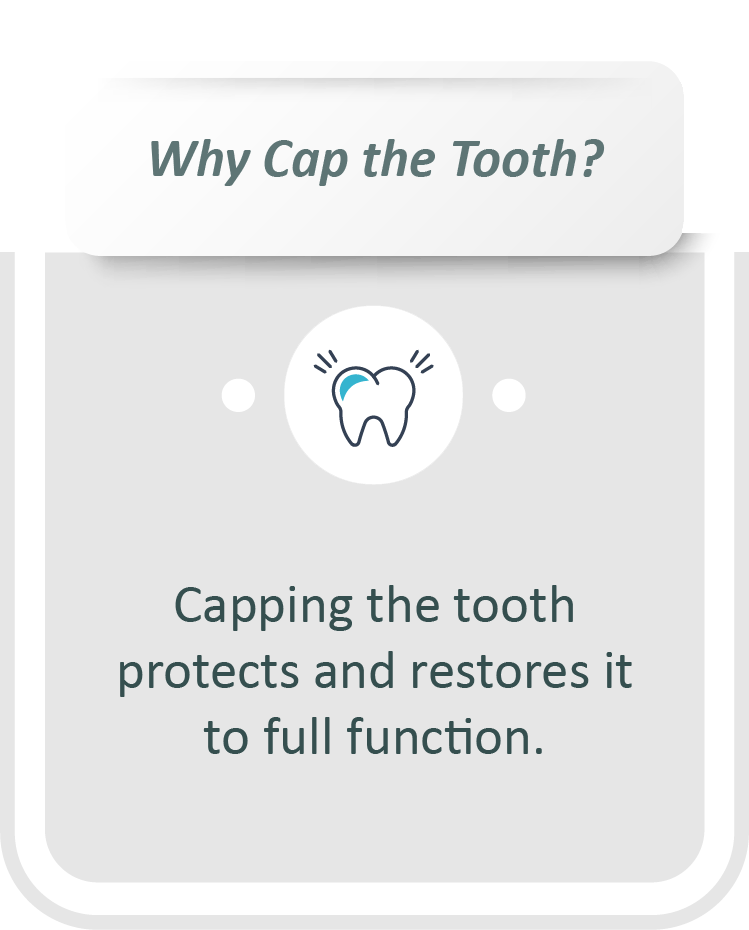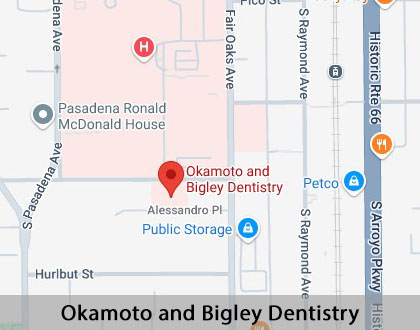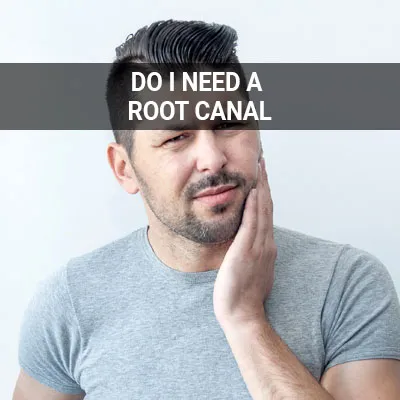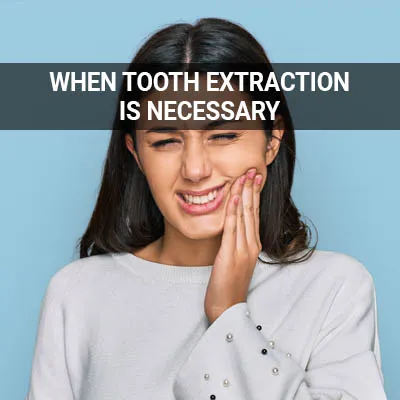Root Canal Treatment Pasadena, CA
A root canal is a restorative dental procedure that saves millions of teeth from inflammation and infection each year. Root canal treatment involves removing the damaged pulp and nerves from inside the tooth to eliminate bacteria and prevent the infection from spreading. If you have an infected tooth, root canal treatment may be able to save it.
Root canal treatment is available at Okamoto and Bigley Dentistry in Pasadena and the surrounding area. This procedure can relieve dental pain and save your tooth. Call us at (626) 472-2178 to learn more about our services or schedule an appointment today.
The Purpose of Root Canals
Patients may need a root canal if they have severe tooth decay. Untreated decay can spread into the tooth pulp, triggering a painful infection.
Symptoms can include:
- Tooth pain
- Fever or facial swelling
- Cracked, broken, or discolored teeth
- Discolored gums
During a root canal, the dentist drills away decay. They also use small instruments to scoop out infected or inflamed pulp from within the tooth. Then, the dentist cleans and shapes the inside of the tooth.
After the root canal is complete, the dentist fills the tooth with a biocompatible material. Finally, the dentist places a small cap over the tooth. This covering is known as a crown. Crowns protect a fragile or damaged tooth from breakage.
“Patients may need a root canal if they have severe tooth decay.”
Benefits of Root Canals
Root canals can help patients avoid tooth extraction. During a root canal, a dentist works to restore a decayed or damaged tooth. This treatment can preserve smiles, prevent future decay, and strengthen damaged teeth.
Preserving a patient’s smile
Extractions can leave gaps in the patient's smile. Many patients feel self-conscious about their appearance after having a tooth pulled. Root canals boost the patient's confidence and enhance their appearance.
Preventing future decay
During a root canal, the provider removes all decay and infection. They clean the inside of the tooth to prevent the infection from returning. Without a root canal, decay can spread throughout the patient's mouth.
Strengthening a damaged tooth
Decayed teeth are vulnerable to breakage and injury. As part of a root canal procedure, the provider attaches a crown. This tooth-colored cap protects and supports the tooth.
“Without a root canal, decay can spread throughout the patient’s mouth.”
What Happens During a Root Canal
Treatment begins with an X-ray. Our dental team examines the patient's mouth and creates a treatment plan. They will also provide a numbing medication to ensure patient comfort during the procedure. The dental team places a dental shield around the tooth. This structure protects the tooth and prevents bacteria from spreading to other parts of the mouth. Once the shield is in place, the dentist drills into the top of the tooth.
We then remove decayed enamel and dentin by exposing infected pulp and cleaning out the inside of the tooth. During this stage of treatment, the dentist may use an antibiotic solution to kill bacteria. Then they fill and seal the tooth. Root canals also include a crown procedure. Each crown is custom-fitted and designed to match the patient's natural teeth. Crowns restore the appearance of a damaged tooth and improve oral function.
Root canals are an option for most patients, but some patients might receive improved results with a different procedure. If the patient's tooth is severely damaged, an extraction may be necessary. In rare cases, root canals can also trigger complications like a dental abscess. Rest assured that these complications are rare. Studies find that root canals have a success rate of up to 98%.
“Root canals are an option for most patients, but some patients might receive improved results with a different procedure.”
Check out what others are saying about our dental services on Yelp: Root Canal Treatment in Pasadena, CA
Preventing the Need for Root Canal Treatment
Although root canals are effective procedures to restore infected or damaged teeth, it is best to avoid the need for a root canal in the first place. Preventing the need for root canal treatment is simple, maintain a good oral hygiene routine. Since root canals are often necessary due to tooth decay, people can help prevent this by brushing twice and flossing once every day.
It is also essential to attend regular dental appointments and seek dental attention as soon as possible when pain or discomfort arises. People can also take certain actions to avoid tooth damage than can necessitate root canal treatment. This includes avoiding acidic foods and beverages, not chewing on ice, and wearing a mouthguard while playing sports and at night if teeth grinding occurs.
“Although root canals are effective procedures to restore infected or damaged teeth, it is best to avoid the need for a root canal in the first place.”
Questions Answered on This Page
Q. How can someone prevent the need for a root canal?
Q. What is an alternative to root canal treatment?
Q. What are the benefits of a root canal?
Q. What happens during root canal treatment?
People Also Ask
Q. Who performs restorative dentistry?
Q. Are root canals a safe and common procedure?
Q. Are there any alternatives to root canals?
Q. How can you save a tooth with a root canal?
Q. What are the services offered endodontists vs. general dentist?
Alternatives To Root Canal Treatment
Root canals are safe and effective procedures to save a tooth. However, some situations may require alternative treatment, such as extraction. Extraction involves pulling out the entire tooth.
This treatment takes more time and can necessitate further procedures to surrounding teeth and supporting tissue. It is always best to try and save a natural tooth when possible. Extractions are best for when a tooth is too damaged to be saved with a root canal.
“Extractions are best for when a tooth is too damaged to be saved with a root canal.”
Frequently Asked Questions
Q. What is a root canal?
A. Root canals can remove infected or inflamed pulp. Pulp is a soft tissue that helps keep the tooth anchored within the mouth. It supplies blood flow and connects the tooth to nerve endings. During a root canal, a dental provider cleans out the pulp and fills the tooth. They also place a crown on the tooth to protect it from future damage.
Q. What are some alternatives to a root canal?
A. Root canals are a good option for most patients since they preserve the natural tooth. Patients who keep their natural teeth may avoid future dental problems. Preserving the teeth prevents jawbone loss, spacing issues, and jaw misalignment.
However, a root canal is not right for everyone. If the tooth becomes severely damaged, the dentist may opt for extraction instead. During an extraction, the dentist removes the entire tooth. He or she can then prepare a false tooth to fill the gap.
Q. Are root canals painful?
A. Modern root canals using numbing medications to prevent discomfort. Some patients may experience soreness after their root canal. However, these side effects usually disappear within a few days.
Q. How much do root canals cost?
A. Costs can vary depending on insurance coverage. As a rule, root canals carry a higher price tag than extraction. However, root canals preserve the tooth and may help prevent the need for future dental care. Our office team can help you compare treatment costs.
Q. Can children receive a root canal?
A. Adults and children can receive root canals for permanent teeth. But if a child develops severe decay or inflammation within a baby tooth, the dental provider may recommend an extraction. Extraction may be the right option if the child will soon lose the affected tooth.
In some cases, however, the provider may opt to perform a baby root canal. These procedures are similar to an adult root canal. Baby root canals preserve the tooth while preventing the infection from spreading.
Endodontic Terminology
Call Us Today
If your tooth is injured or infected, do not hesitate to seek treatment. Our team at Okamoto and Bigley Dentistry can help save your tooth. Call us today at 626-472-2178 to learn more about our services or schedule an appointment.
Helpful Related Links
- American Dental Association (ADA). Glossary of Dental Clinical Terms. 2025
- American Academy of Cosmetic Dentistry® (AACD). Home Page. 2025
- WebMD. WebMD’s Oral Care Guide. 2025
About our business, and website security
- Okamoto and Bigley Dentistry was established in 1984.
- We accept the following payment methods: American Express, Cash, Check, Discover, MasterCard, and Visa
- We serve patients from the following counties: Los Angeles County
- We serve patients from the following cities: Pasadena, South Pasadena, Arcadia, Monrovia, and Glendale
- Norton Safe Web. View Details
- Trend Micro Site Safety Center. View Details
Back to top of Root Canal Treatment

